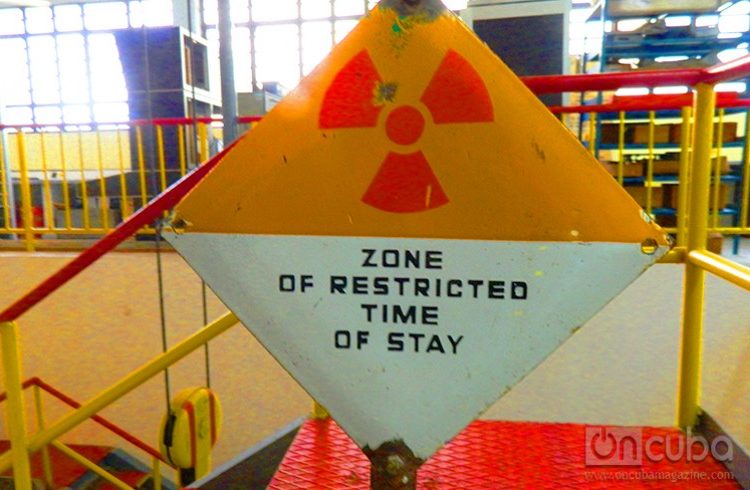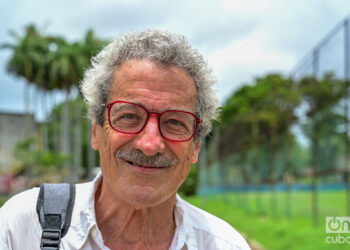The nuclear or atomic energy is commonly related to its darker applications such as armaments with potential for mass destruction or major disasters that have been linked to the operation of a nuclear power plant: Chernobyl in 1986 or Fukushima in 2011. The first, triggered by human error, the second by a natural event.
For this reason, the use of energy obtained from nuclear level processes in certain isotopes of chemical elements is usually subject to controversy. Although it is one of the “cleanest” energy, malicious dealings and errors in implementing a technique can bring first-order consequences to mankind.
However, the existing debate takes into account the advantages that the use of such energy has brought to various aspects of human life, among which highlights health. Cuba uses X-rays from early last century, one of the applications of nuclear energy in medicine. Later, the country adopted other nuclear techniques in radiation treatment for various cancers. All this before 1959.
In fact, the Caribbean island is the founder of the International Atomic Energy Agency (IAEA), established in 1957 as a United Nations project. Over the next decade the new leadership of the country, a policy that Fidel Castro had announced in his speech History Will Absolve Me was evident: the new Cuba was interested in the peaceful use of nuclear energy.
Thus a number of scientific institutions devoted to the subject were created. With the names of Institute of Nuclear Physics, National Institute for Nuclear Research, Atomic Energy Commission of Cuba, the bodies responsible for managing this resource followed.
Currently there is the Agency and Nuclear Energy Applied Technologies (AENTA), which has 5 centers associated or linked to this work:
– Center of Protection and Hygiene Radiation, Center for Technological Applications and Nuclear Development (CEADEN)
– Center For Isotopes, the Center of Information Management and Energy Development (CUBAENERGÍA)
– Center Of Environmental Engineering of Camagüey
– Institute Of Cybernetics, Mathematics and Physics (ICIMAF)
– Higher Institute of Technology and Applied Science (INSTEC), under the Ministry of Higher Education.
The National Center for Nuclear Safety is the regulator of all nuclear practices in prevention, and is not subject to AENTA, but directly to the Ministry of Science, Technology and Environment (CITMA).
Health sector that uses nuclear techniques
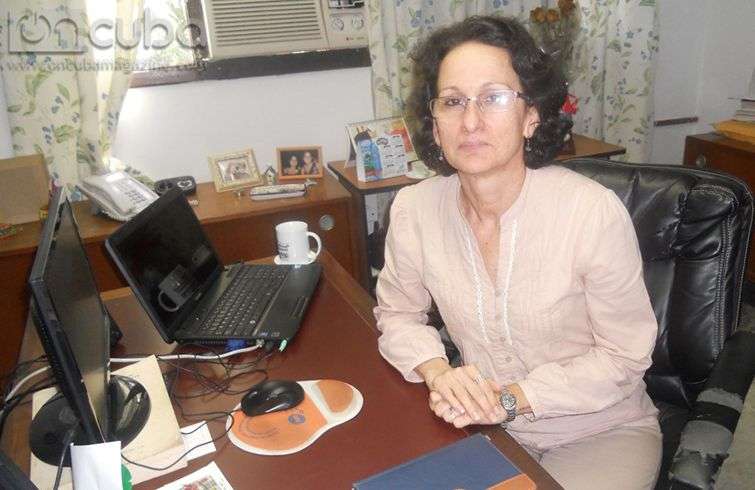
The President of the AENTA, Engineer Aniuska Betancourt Hernandez, spoke to OnCuba on different applications that the Agency coordinates, lead manager of nuclear energy in the country. The branches covered by them are medicine, industry, research and teaching.
According to Betancourt, many projects were carried out since the 10 80s. In the 1990s all applications were generally depressed by the lack of resources in the so-called “special period”, and in the 2000s they begin to make new investments in equipment. In this way, they have been replaced all radiotherapy equipment in hospitals, of Czech origin, by more modern equivalents from Canada.
In health, radiation is along with the radio diagnostics, the most expanded impact of nuclear power in Cuba. This field of nuclear medicine is widely recognized in the treatment of cancer, the leading cause of death in the country. According to the President of the AENTA, “the equipment we have right now in the country cannot cope with the need of tools to fight cancer.”
“For two years the country decided to modernize all the technology related to the diagnosis and treatment of cancer. We purchased with own resources, a cyclotron, a particle accelerator that enables the production of short-lived radioisotopes, but allows a much more effective diagnosis of cancer and to a lesser extent, cardiovascular disease “.
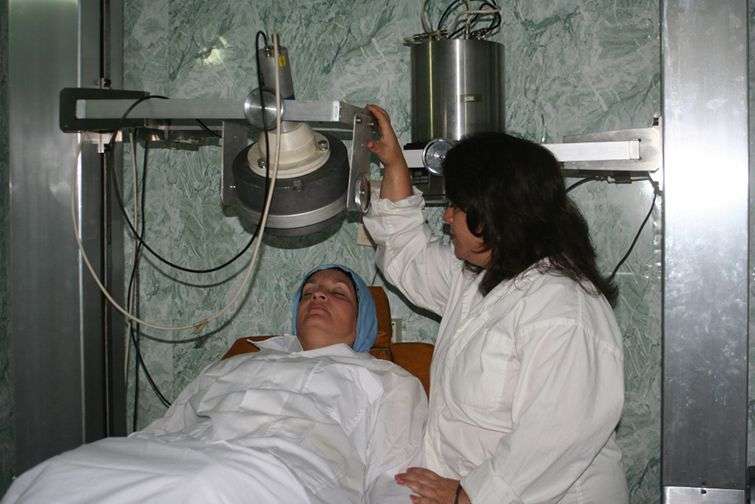
This equipment is being installed at the Center for Medical and Surgical Research (CIMEQ), and will be operated by specialists from the Isotope Center. Cyclotron production shall supply three PED-CT detection equipments, associated with a computed tomography apparatus for displaying the diagnosis discovery the radioisotope makes.
These devices will be located in each of the following hospitals: Hermanos Ameijeiras, Institute of Oncology and the CIMEQ. To the question of why the three centers that are benefited are only in the capital, the engineer replied:
“The radioisotopes produced by the cyclotron will have a very short half-life, which is considered more economical transferring patients from other provinces to Havana to move radiopharmaceuticals. You have to move a lot more of them, of which very few come available. However, there is a program that proposes to have Cyclotron, perhaps smaller, located in other regions, but will not be realized at the moment “.
In the Oncology Hospital they had already installed a particle accelerator equipment that allows emit ionizing radiation prescribed to patients with this disease, without using radioactive source. In addition, this particular system is linked to a scanner that requires the specific point where the person should be irradiated.
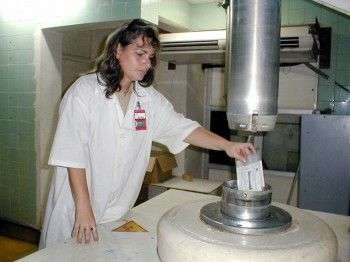
“These investments will lead to development of nuclear applications in the country and reaffirm the need to train prepared staff in this area. For this reason they are making specific Masters of Medical Physics at the Higher Institute of Technologies and Applied Sciences “.
The Center for Isotope produce radiopharmaceuticals used in nuclear medicine modules that exist throughout the country. It even exports some of these products, providing services to countries in Central America, the Caribbean, Venezuela and Ecuador.
Moreover, the CEADEN designed membranes used in treatment of burns and ulcers. Although there is not still a large-scale production, engineer Betancourt says “they have been well accepted in the medical staff for their results.”
Other applications: industry, biotechnology…
Although the health sector accounts for the majority of nuclear techniques executed in Cuba, exist within the industry other applications such as industrial radiography and radiation. Irradiators are devices that use radioactive sources for food preservation, sterilization of medical devices as well as the preservation of cosmetics and others.
“This technique is very safe: it does not cause any variation in the characteristics of the products or hurt people. The fact that the products are irradiated to increase their potential for conservation and eliminate potential bacteria does not imply that they are radioactive, “said Betancourt.
One of the current projects is the rescue of an irradiator created in the National Institute of Food Research in 1987. This is a joint plan with the International Atomic Energy Agency, and should be completed by 2017. The remodeling is intended that this plant not only engaged in food irradiation, but also to sterilize medical supplies, and other services.
Many industries, including medical and food products do not yet know the possibilities of radiation to increase durability and sterility of its products. Thus the AENTA is in a feasibility analysis stage with respect to the implementation of large plants, which would have the potential to meet many of the requirements of the country.
In the Special Development Zone Mariel they are considering the need to build a plant to irradiate exports. “Many countries have regulations concerning import food: they do not accept them if they are not irradiated. In the early 2000s, Brazil had to make a big investment of irradiators to export meat to the United States, applying that regulation. “Cuba exports many products, if radiated, may have an acceptance and durability, for example fruit “.
Other smaller-scale applications of nuclear technologies can be seen in Agriculture, where there are projects with the National Center for Agricultural Health and the National Institute of Agricultural Sciences on researching varieties more resistant to drought and salinity crops. In addition, soil studies are underway to plan what to grow on each kind of soil and what kind of rotation.
The irradiator of CEADEN meanwhile supports the medical pharmaceutical industry radiating drugs or vaccines to rid of pathogens and to preserve them, like spirulina and shark cartilage.
Industrial radiography uses nuclear technology to detect flaws in metal structures, using radioactive sources and / or X-ray equipment as part of that area; CEADEN highlights a study that verifies the resistance of the attractions at amusement parks in Cuba.
This method can also help detect faults in oil extraction pipes. Precisely, the other major branch of nuclear applications in industry is oil exploration. These studies can identify potential sites for foreign companies in Cuba, including the multinational Schlumberger, located in Matanzas.
Moreover, industrial radiography allows detecting faults in products and materials such as pipes. The company CENEX in Ciego de Ávila is the only one in the country dedicated solely to this task, and its foundation was linked to the abandoned nuclear power project in Cuba.

